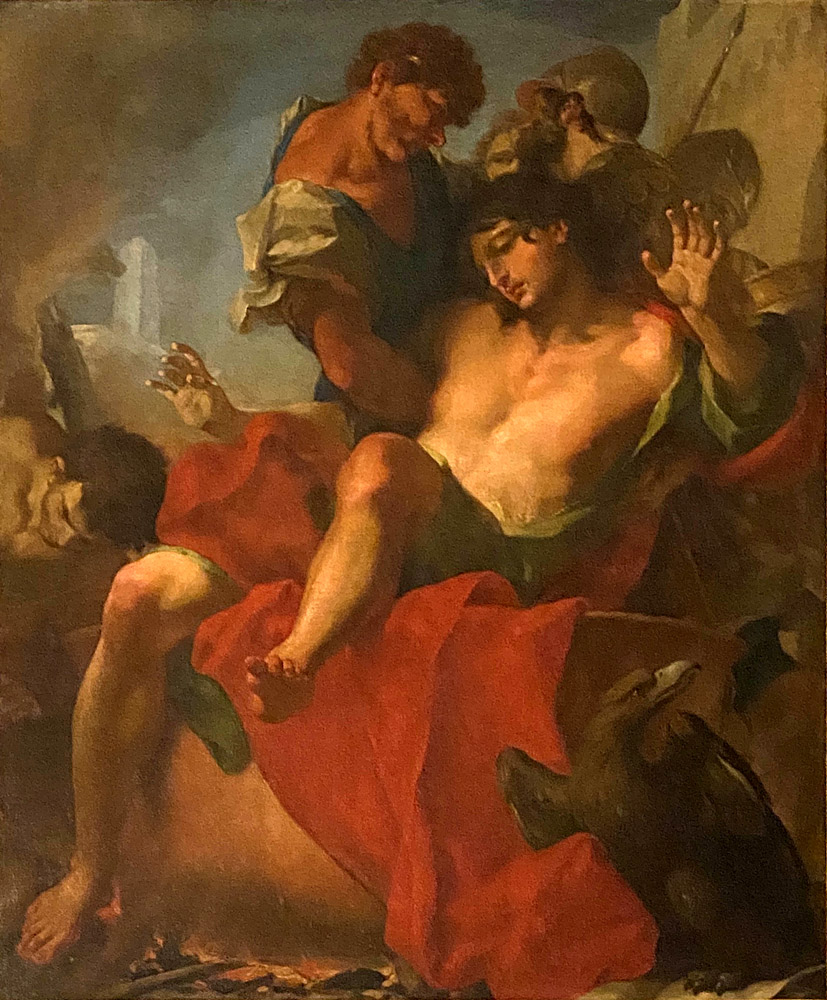
Antonio Balestra
St. John the Evangelist Placed in Boiling Oil
Circa 1725
Church of San Stae, Venice
A label in the church entitles this painting "Martyrdom of St. John the Evangelist," but John was not a martyr, and Balestra clearly does not suggest that he is. Since the Renaissance it had been customary in martyrdom images to show an angel descending from Heaven with a palm branch or laurel leaf. This is not the case in this image.
In the Golden Legend St. John was indeed placed in a caldron of hot oil as shown here, but "as he had been a stranger to the corruption of the flesh, he emerged unharmed." The notion that his purity kept him unaffected by signs of aging led Caxton to translate the Legend's statement as "he issued out by the help of God, more pure and more fair, without feeling of any more heat or chauffing, than he entered in" (my italics). Balestra makes the same presumption in making the saint a remarkably beautiful youth, contrasted with the sunburnt ungainliness of the men lifting him out.1
The eagle that is John's attribute is in the bottom right; the caldron and the fire beneath it are in the bottom left.
The red sheet makes no sense as an element in an actual removal from a caldron, since it would sop up the hot oil and continue the torment, so its purpose should be symbolic. It could be intended as a visual echo of the fire below the caldron or a contrast used to emphasize the healthy tone of the saint's body. Red is the liturgical color for feast days of Apostles and martyrs, so the sheet could signal his status as role as an Apostle, or even make him a sort of "honorary" martyr given his willingness to endure what one could reasonably expect to be a martyrdom in the boiling caldron.2
View this image in full resolution.
Read more about images of St. John the Evangelist.
Photographed at the church by Richard Stracke, shared under Attribution-NonCommercial-ShareAlike license.